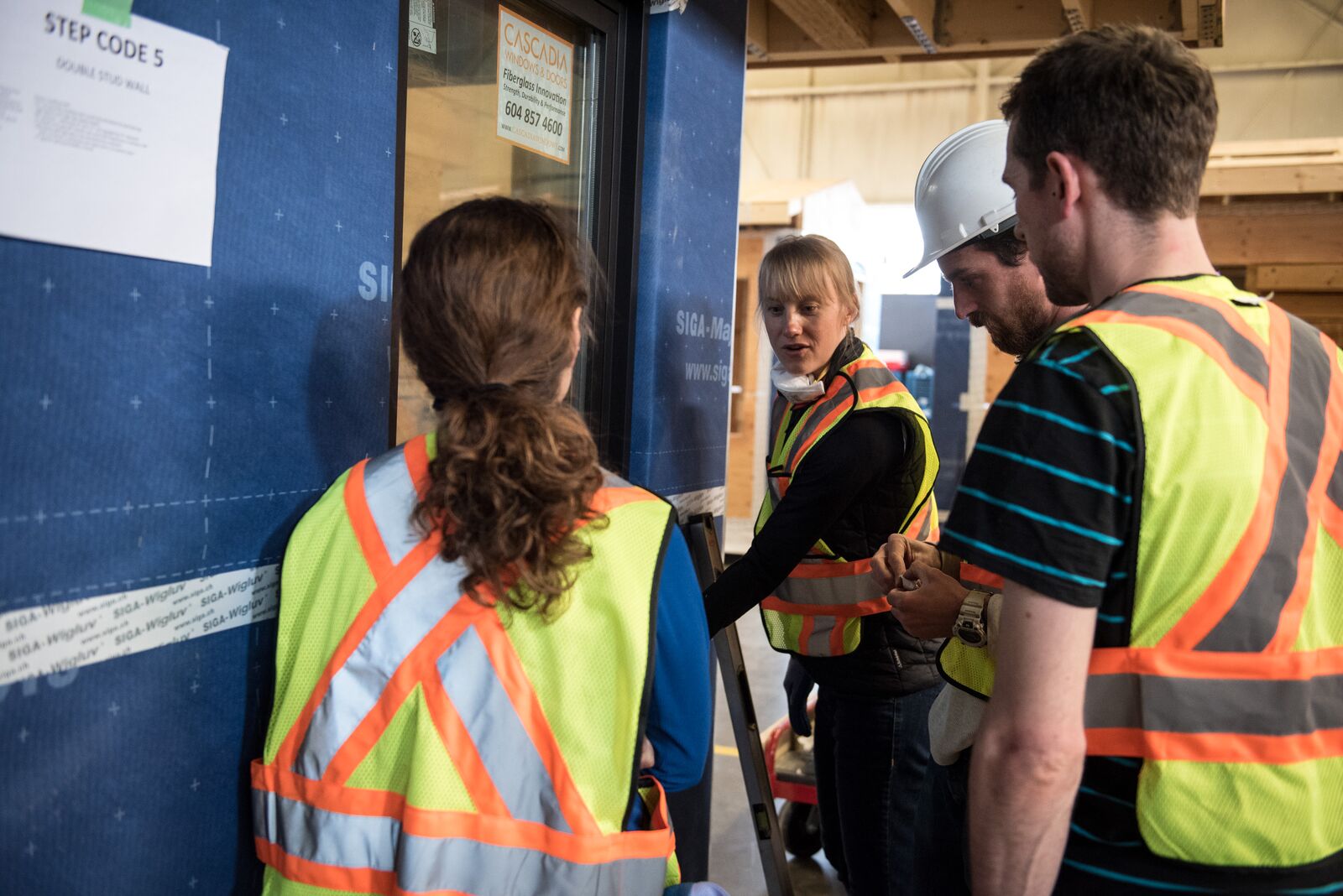Note to Media: Alexandre Hebert, Manager of Zero Energy Buildings Learning Centre (ZEBLC) at BCIT, is available for interview on topics related to the economic impact and resources to support industry in understanding and transitioning into the Energy Step Code. Please contact Amy Chen to schedule.
In 2017, the Province of British Columbia made a commitment to achieve net-zero energy-ready buildings by 2032 through the BC Energy Step Code (Step Code). In short, the BC Energy Step Code identifies energy-efficiency targets for builders and designers with an overall goal to create long-term energy-efficient buildings. Net-zero energy buildings have the ability to produce as much energy as the building consumes over the period of a year, such as through rooftop solar panels.
Whether you are a current or prospective homeowner, builder, designer, or you just want to learn more about the BC Energy Step Code, the BCIT Learning Centre for Zero Energy Buildings (ZEB) has outlined five essentials for a crash-course on the Step Code. The province has indicated that it will gradually integrate the Step Code into the base BC Building Code so builders will be at a competitive advantage if they get up to speed on its requirements today. The Vancouver Economic Commission (VEC) also released a report quantifying the potential economic impact of the BC Energy Step Code in Metro Vancouver to be an estimated $3.3 billion market opportunity and more than 1,600 new job openings.
1) Incremental approach to reach net-zero energy by 2032
For homes, there are five steps to the BC Energy Step Code. Think of it as a stairwell.
The higher the step, the more energy-efficient the construction is. This incremental approach allows for gradual increases in energy-saving applications. Each municipality chooses which step to start at and whether to provide incentives or requirements at each step. The common objective across all municipalities is to reach the final step by 2032, where net-zero energy-ready performance is achieved.
2) It is all about performance
The Step Code changes the way energy efficiency is treated in the construction industry. Instead of prescribing the materials and construction techniques, the Step Code offers builders more freedom on how to design and build. Communities that are using the Step Code will instead require new buildings to conform to its energy use, thermal energy demand, and air-tightness performance targets.
READ MORE: How BCIT researchers are helping to fill the knowledge gap in Electric Vehicle uptake
3) Envelope-first approach
The envelope refers to the physical enclosure that separates the building’s heated and cooled interior from the exterior environment. The envelope is comprised of a number of materials (wall, foundation, roof assemblies) and components (doors and windows).
A builder’s primary focus should be on creating a high performance envelope that minimizes air leakage and heat loss. For example, installing a well-insulated window facing south to maximize the sun’s energy in winter, but adding a shade above it to prevent overheating in summer.
4) Increased durability and comfort
Optimizing energy-efficiency during the design and construction of a building leads to longer-lasting buildings with lower operating costs and maintenance. Comfort is maximized as air and temperature are both better regulated to meet changing environmental conditions. Saving you money and keeping your family the right temperature!

5) Receive support from the BCIT Learning Centre for Zero Energy Buildings
The BCIT Learning Centre for Zero Energy Buildings (ZEB) is available to support the industry in transitioning to the new BC Energy Step Code. BCIT leads in training green builders and works with many industry professionals and policymakers to reduce greenhouse gas emissions.
Start by taking the Energy Step Code Training to expand your knowledge and skills in the construction industry. If you’re ready to take your skills straight to the top step, take a five-day course on Passive House Trades Training at our state-of-the-art High Performance Building Lab. BCIT can also come to you with our suite of customized industry courses, available as half-day, full-day or multi-day.
Have you subscribed? Sign-up to receive the latest news on BCIT.
Educational videos, resources and more information available from Learning Centre for Zero Energy Buildings.
Alexandre Hebert, Manager of Zero Energy Buildings Learning Centre at BCIT, and Sandra Rohler, Passive House Instructor, shared their expertise on building energy efficient buildings.
